*Note – this is a Guest Post from Roger Parent at Digital Position, a PPC management agency.
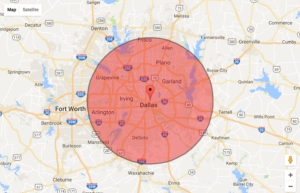
Talk to larger businesses about Google Adwords or any PPC (Pay Per Click) marketing and they’ll start gloating about their results. Speak to a small local business owner and you continuously hear “PPC doesn’t work!” Why does it work so well for some and so poorly for others?The answer is because larger businesses can afford to pay experts to manage the accounts for them. As an expert in the PPC field for almost 10 years, I often relate managing PPC accounts to being a stock broker. As a stock broker, you buy and sell multiple stocks which forms a portfolio. While a stock broker’s goal is to try to make a profit on every single transaction, it’s not realistic. Ultimately, a broker’s goal is to outperform the market in their portfolio as a whole.PPC managers are no different. We’re trying to outperform your competitors. Our stocks are keywords. We make educated decisions based on trends and evaluate market competition. We work with our clients to align strategy. Some keywords work, some don’t – we’re constantly shifting budget around, bidding higher / lower, and making other adjustments to put your marketing dollars in the best places possible.But small businesses typically can’t afford to pay for PPC and a “broker” like us. So you’re helpless, right?Wrong.There is a strategy for LOCAL businesses that works extremely well that’s fairly easy to implement. It’s called Radius Targeting meant for local PPC advertising. This is, in my opinion the #1 missed opportunity with local business marketing. Stop spending money on newspaper columns and junk mail. You’re wasting time. If you’re a small business with a very limited budget, move all the marketing dollars you can scrape up into radius targeting.
What is Radius Targeting?
Radius Targeting is simple – targeting online ads only within a radius of your business. Are you a plumber? Define a radius of 20 miles around your business or as far as you’re willing to commute. Only people within this radius are eligible to see your ads! Now you can compete on higher competition terms because you’re only showing ads to the most qualified of potential customers. Why show ads in Texas if you’re a plumber based in Connecticut? Yet small businesses make this mistake all the time. So here’s a free step by step guide on how to set up radius targeting for your small business.
A Step-by-Step Guide to Set Up Radius Targeting
Follows these steps below in your Adwords Account. For the purpose of simplicity, I’m not teaching you how to set up an adwords account. Just follow that link and you’ll set it up in 5 minutes. In this guide, if I don’t mention a setting, then you can just leave it as it is by default. I’m only referencing the changes you need to make.
1.) Create a new “Search Network” only campaign:
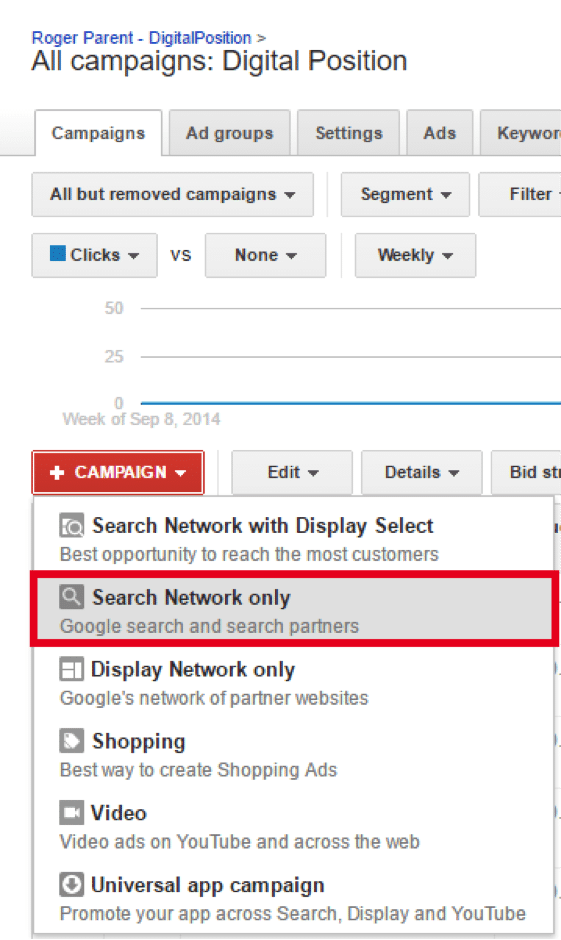
2.) Choose “All Features,” then name your campaign:

3.) Under “Locations,” Click “Let Me Choose,” and then the “Advanced Search” link:

4.) I’ve included the next steps in alphabetical order by letter in the below screenshot:
A. Click “Radius Targeting”B. Enter the Business AddressC. Choose the distance you’d be willing to travel.D. Click “Search”E. Click “Add” to add the targetingF. Click “Done” in the bottom left.
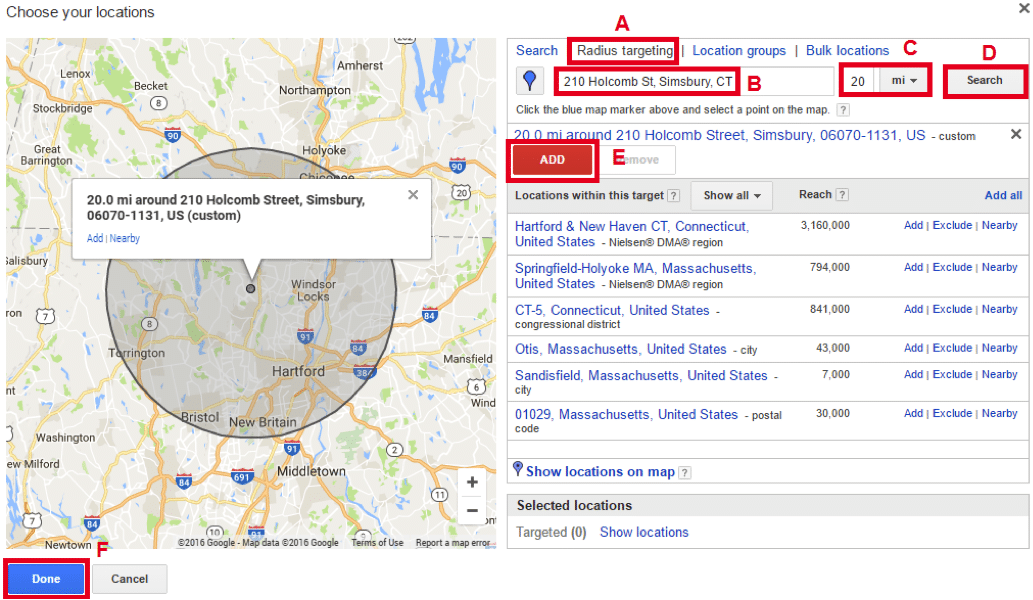
5.) You’ll be taken back to the Campaign Creation Page. Click on the little “+” symbol next to “Location Options (advanced),” and select “People in my targeted location.”

6.) Ensure the Language is “English” (unless you’re targeting a different language).

7.) Enter in a Default Bid (I suggest a $2.00 start, we’ll address changing this later on) and Budget that you’re working with:

8.) OPTIONAL – Ad Extensions “extend” your ad to make it take up more space on the page. These extensions also allow you to get higher positioning on the page for cheaper. I recommend every local business has at least 4 of these checked:
A. Location – Location extensions allow you to link to your Google Business account (which is what makes your listing show up on Google Maps so you should have one! It’s free!).B. Sitelinks – Sitelinks extend your ad with links to other pages on your website that a user may find useful. Most importantly, they take up a LOT of space on the page. I recommend writing 4-6 of these. Just click on “New Sitelink” and fill in the following fields:
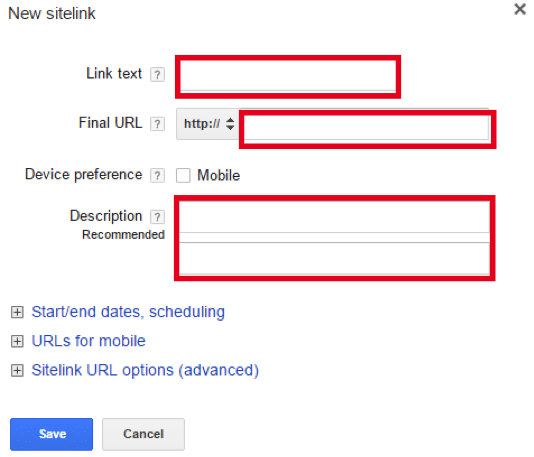
Once you’ve created them, they should look like this, and you simply click on the arrows to “Add” them to the campaign:
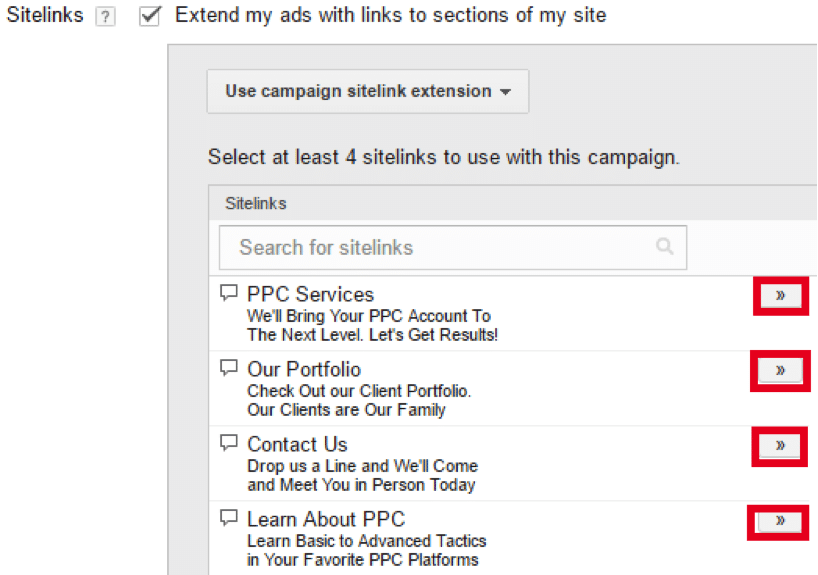
C. Call – this is self-explanatory. Just click “New Phone Number” and enter in your phone number.D. Callouts – these can be anything, but I typically use callouts as selling propositions. Just create them, then add 6 of them to the campaign

9.) Moving on from Ad Extensions, under “Advanced Settings,” click the “+” symbol for “Ad Delivery; Ad Rotation.” Click on “optimize for conversions”:
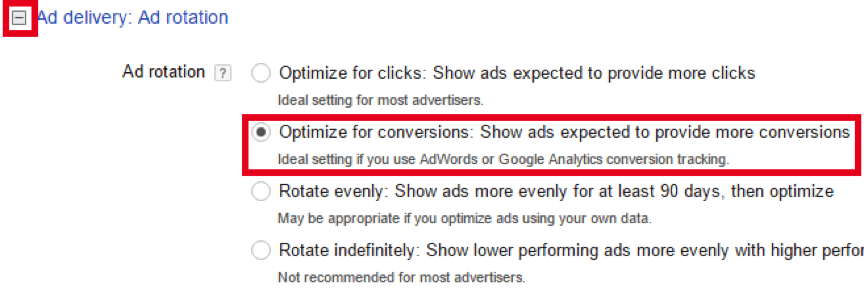
10.) Click “Save and Continue”:

11.) Name your Ad Group and Write your First Ad.
An ad group is simply a group of keywords. All the keywords in an ad group share the same ads. Fill in the appropriate fields – an example of your ad is generated on the side so you can see what your ad looks like!
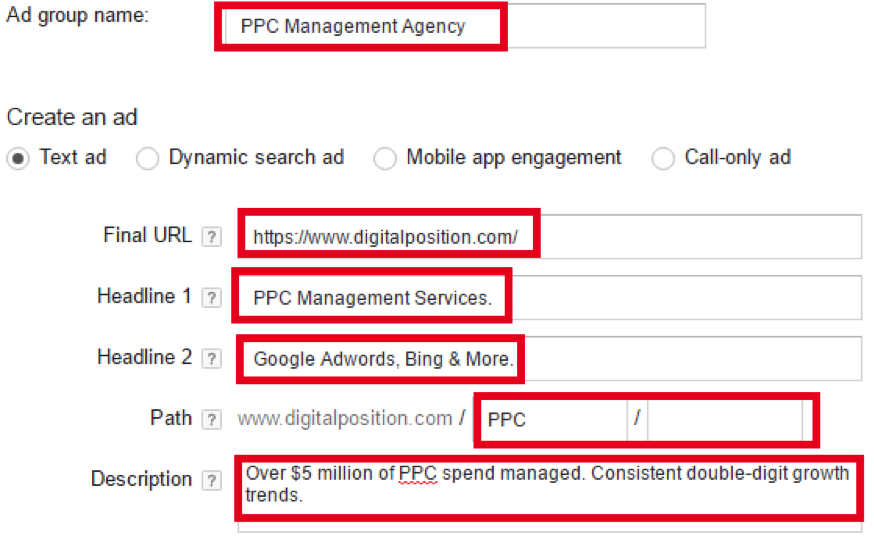
12.) Enter Keywords.
Without confusing you too much, we’re going to simply put brackets around every keyword we put in here. This makes it so that only those search queries are eligible to show your ads.*Note – think of what people are searching for. If you’re a plumber, they’re probably searching for [plumber]. They may also be searching for [plumber near me], or [plumber in CT]. Add a couple different keywords that are all tightly related, because your Ad above has to relate to all of them! Suggestions will be shown on the right.

13.) Click “Save Ad Group”

14.) Now we need to revisit those keyword bids. Click on the campaign, THEN go into the “Keywords” tab.
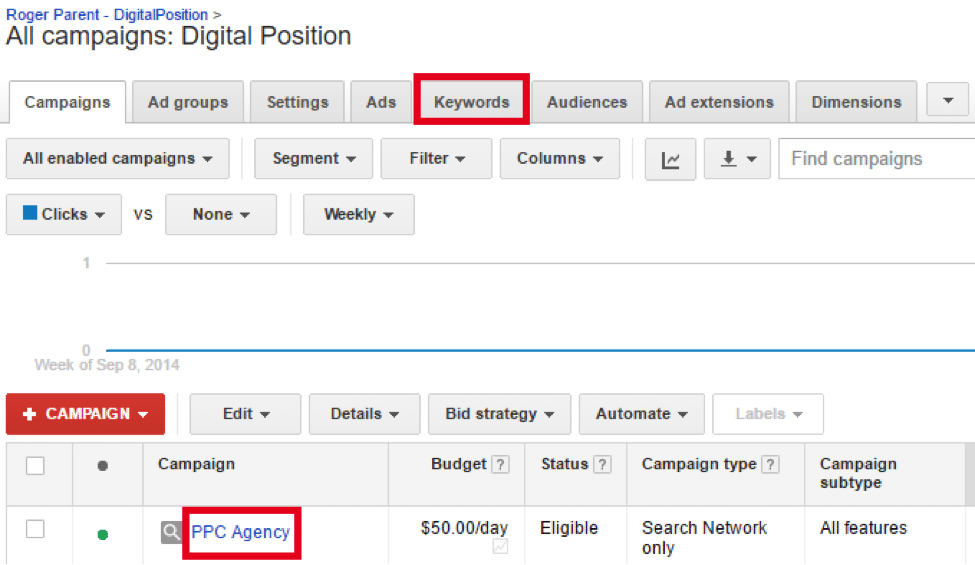
15.) This is where you’ll manage your bids.
Because you’re targeting a small radius, bid estimates may be pretty high. That’s OK – if you’re not on the first page, then you’ll get literally ZERO traffic. Also keep in mind that a bid does not necessarily mean that’s what you’re going to pay per click. It’s almost always lower. You’ll want to select all your keywords and then edit -> Change max. CPC bids
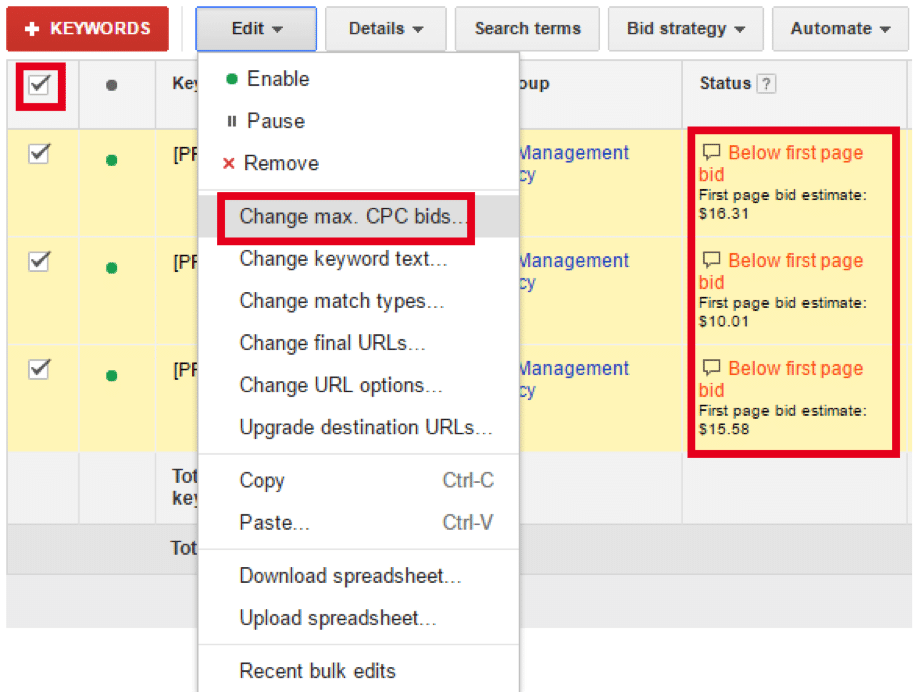
Change the drop-down to “Raise to estimated top of page bid.” You can also raise these bids however you’d like, but I recommend getting them started in prime positioning to get data in. Click “Make changes” and you’re all set!
16.) Now you simply manage those bids to move your positioning around.
If you’re not getting traction, it’s either because your keywords don’t have enough volume, your bids are not high enough, or your ad / landing page aren’t relevant enough to the keyword.The management after the fact in this scenario isn’t nearly as complex as typical PPC management. Reason being, small businesses will typically KNOW when they’re driving leads (if the phone rings once a month and now it’s ringing 5x a week, you know it’s working!). You can use complex tracking systems, or you can create a contact form on your website and set up conversion tracking so you know exactly what keywords are working and not working.The first step however should be to prove concept that this platform can start driving leads for you. As soon as you’ve done that, your next step is probably to call Digital Position and we can start scaling up your business, installing tracking, and utilizing more advanced PPC tactics!
